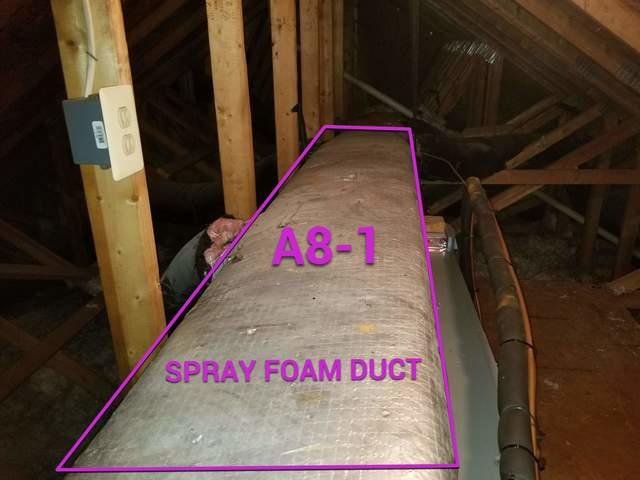
Planning the job
Tim was able to identify the needed service and material needed to spray foam encapsulate this HVAC duct.
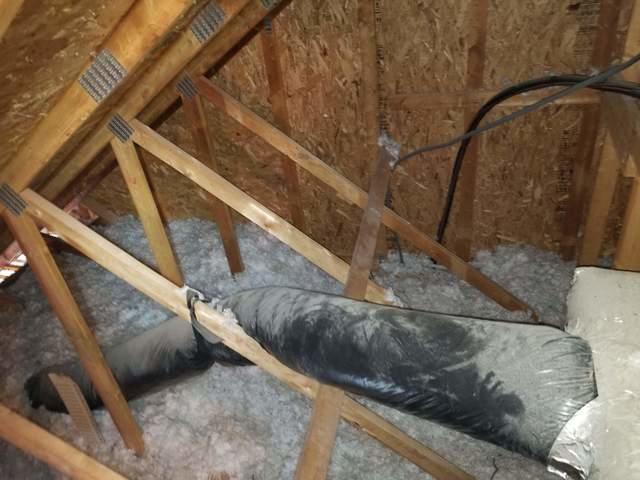
Exposed HVAC duct
It is always best to use enough insulation material to bury these type of HVAC ducts. The low level of insulation shown here was leaving the duct exposed to the heated air in the attic.
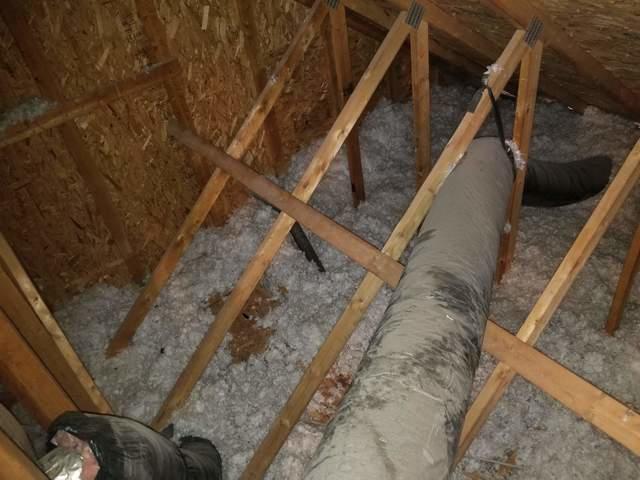
Exposed HVAC duct
It is always best to use enough insulation material to bury these type of HVAC ducts. The low level of insulation shown here was leaving the duct exposed to the heated air in the attic.
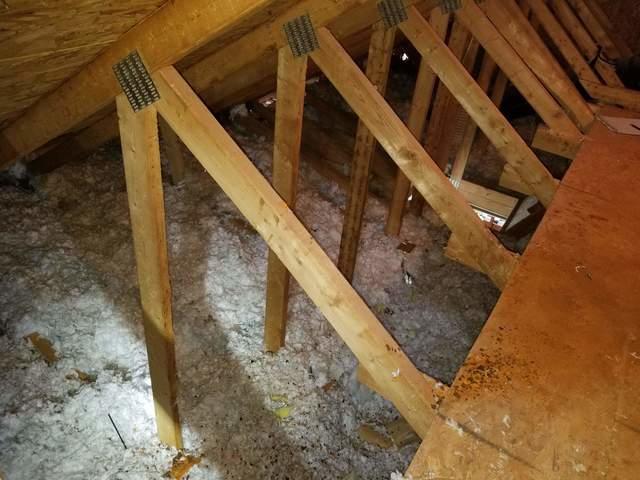
Insufficient insulation level
Thin spots in the insulation allow air and heat/cold to pass from the rooms below to the attic. The places where light is visible are also where unconditioned air is able to move freely.

Uninsulated spaces and HVAC ducts
The lack of insulation here meant that this area was uncontrolled and susceptible to temperature fluctuations.
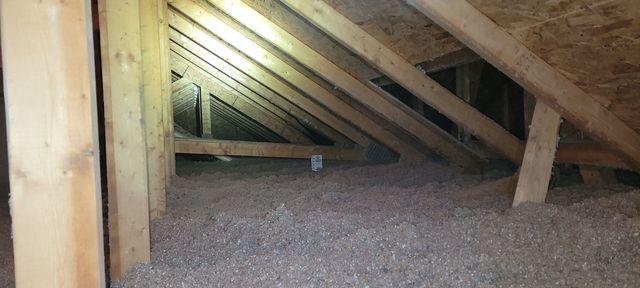
Attic after
After air sealing was completed the TruSoft cellulose insulation was blown in to fill up the attic and cover the previously exposed HVAC ducts which are now buried.
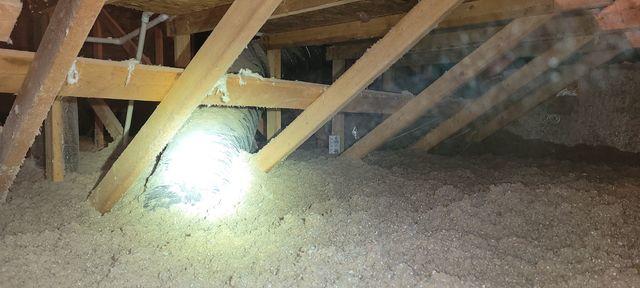
Attic after
After air sealing was completed the TruSoft cellulose insulation was blown in to fill up the attic and cover the previously exposed HVAC ducts which are now buried.

Spray Foam Encapsulated HVAC duct
This metal duct was covered in spray foam to insulate and protect the air traveling inside from being impacted by the attic temperatures.
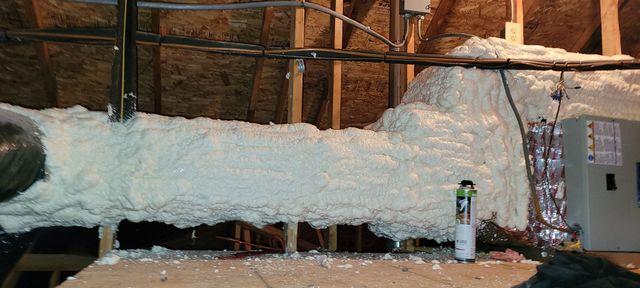
Spray Foam encapsulated HVAC duct
This metal duct was covered in spray foam to insulate and protect the air traveling inside from being impacted by the attic temperatures.
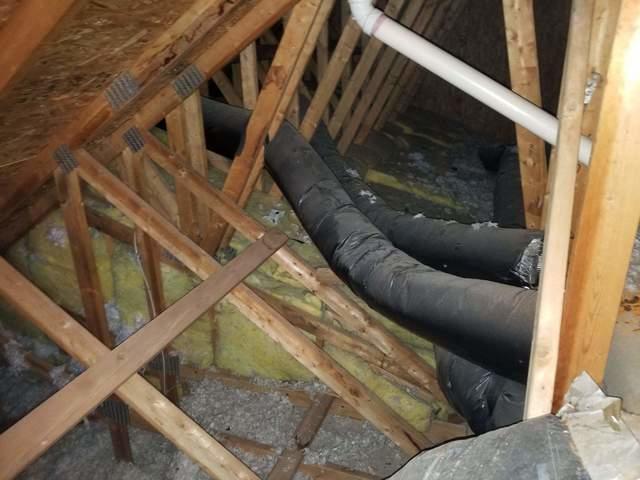
Insufficient insulation before
Using different insulation materials can mean different results from one area of the attic to another. Leaving the HVAC ducts exposed can impact the temperature of the conditioned air travelling inside. .

Job completed
This home will now be more comfortable year round.

